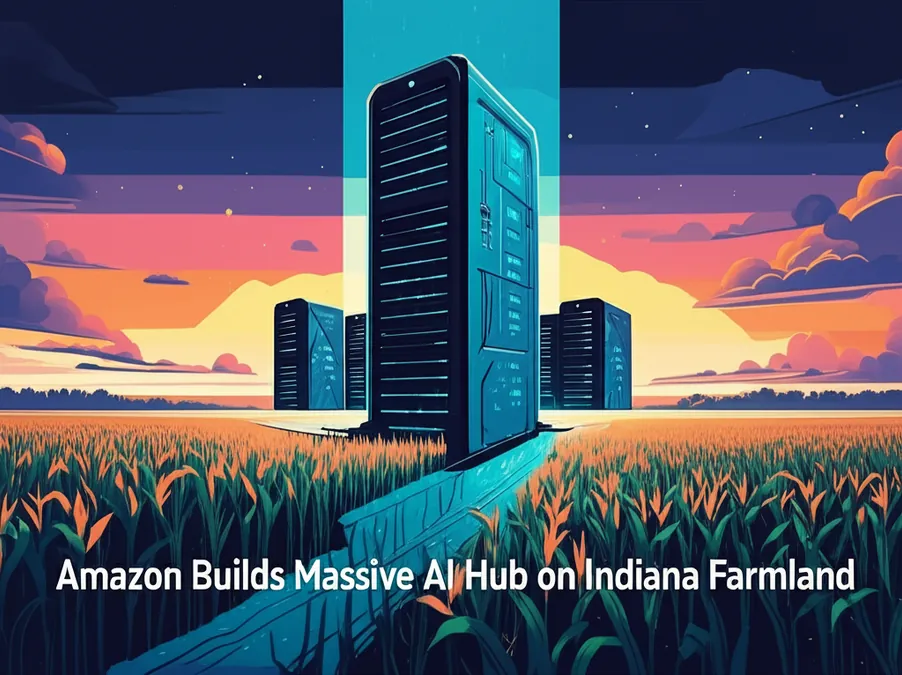Developer Offer
Try ImaginePro API with 50 Free Credits
Build and ship AI-powered visuals with Midjourney, Flux, and more — free credits refresh every month.
Amazon Deploys One Million Robots Powering Warehouse Automation
Amazon, a global leader in e-commerce and logistics, has reached an impressive milestone in its journey towards warehouse automation: the deployment of its one millionth robot. This achievement not only highlights Amazon’s commitment to innovation but also underscores its position as the world’s largest developer and operator of mobile robotic systems. Operating in over 300 facilities worldwide, Amazon’s robotic army is a testament to the company’s ability to integrate cutting-edge technology into its logistics operations, improving efficiency and setting new benchmarks for the industry.
The AI Brain Behind the Bots: Introducing DeepFleet
At the forefront of Amazon's technological advancements is its commitment to integrating artificial intelligence into its operations. A key innovation is DeepFleet, a generative AI foundation model designed to optimize the movement of robots across Amazon’s global fulfillment network. Developed with internal logistics data and AWS tools like Amazon SageMaker, DeepFleet aims to enhance the efficiency of the robot fleet by 10%, which translates to reduced delivery times and lower operational costs.
DeepFleet functions as an intelligent control layer, managing thousands of autonomous mobile robots in high-density fulfillment centers. Similar to an urban traffic management system, it dynamically coordinates robot paths to reduce intra-facility congestion. This advanced system integrates navigation, inventory distribution, and task prioritization into a cohesive model that continuously learns and adapts to improve its decision-making. As a result, it offers a scalable solution that promises enhanced operational throughput, bringing customer inventories closer and consuming less energy.
A Decade of Robotic Evolution
Amazon’s journey into robotics began in 2012 with a singular focus on shelf transport. Since then, the company has diversified its robotic fleet to fulfill specific logistical roles. The Hercules platform, for instance, is designed to handle heavy inventory, managing weights of up to 1,250 pounds. The Pegasus system is tailored for precision sorting and package routing, while Proteus, Amazon’s first fully autonomous mobile robot, operates safely alongside human workers in open zones.
Enhancing the Workforce Not Replacing It
Crucially, Amazon emphasizes that these advancements in robotics are not intended to replace its workforce. Instead, they enhance safety and create more specialized roles. Since 2019, Amazon has upskilled over 700,000 employees through initiatives such as the Career Choice prepaid tuition program. This program prepares workers for technical roles in systems operations, robotics maintenance, and engineering, reflecting Amazon’s commitment to workforce development alongside technological progress.
The Future of Advanced Robotics
The implementation of advanced robotics in Amazon facilities requires a 30% increase in technical jobs compared to traditional warehouses. This shift necessitates a workforce skilled in managing automated environments. The introduction of DeepFleet is part of Amazon’s broader strategy to leverage AI for operational improvements. By focusing on real-world logistical challenges, Amazon aims to enhance robot transit times, leading to faster deliveries and reduced equipment wear-and-tear.
Amazon maintains robust control over its robotic systems by manufacturing them in the U.S., ensuring stringent quality control and facilitating rapid feedback between engineers and operators. This integrated approach encompasses research, development, production, and deployment, enabling Amazon to swiftly adapt and refine its robotic solutions.
Looking ahead, Amazon plans to further enhance DeepFleet’s capabilities, potentially refining inventory storage and expanding fast shipping options. This ambitious vision is not merely a technological upgrade but a fundamental restructuring of fulfillment processes, driven by AI and robotics working in synchronized coordination.
Compare Plans & Pricing
Find the plan that matches your workload and unlock full access to ImaginePro.
| Plan | Price | Highlights |
|---|---|---|
| Standard | $8 / month |
|
| Premium | $20 / month |
|
Need custom terms? Talk to us to tailor credits, rate limits, or deployment options.
View All Pricing Details

